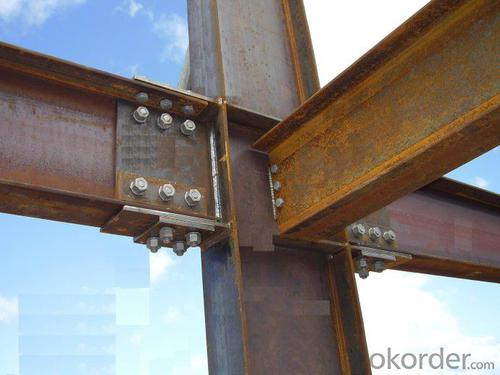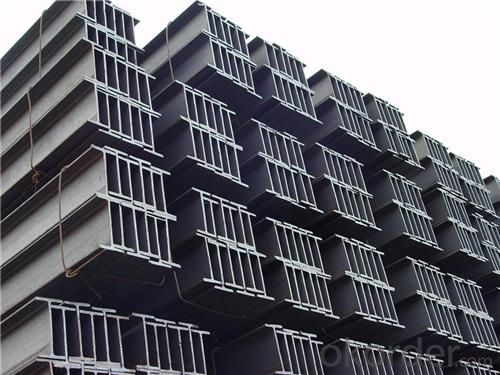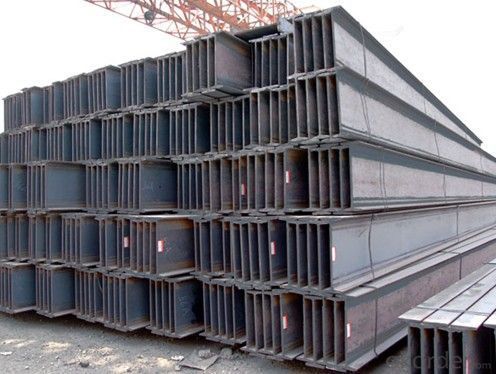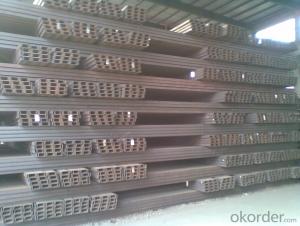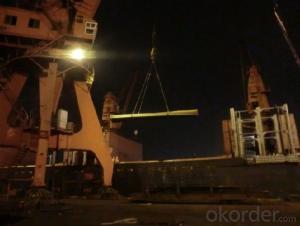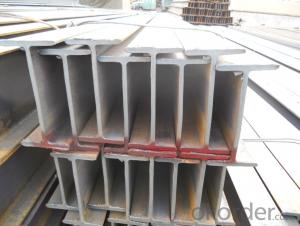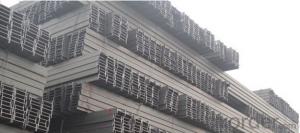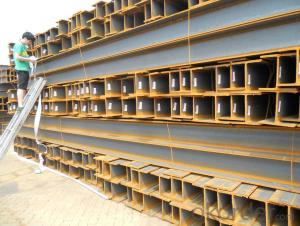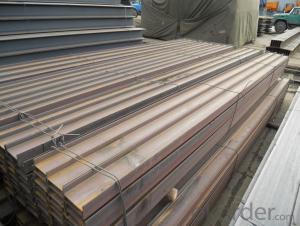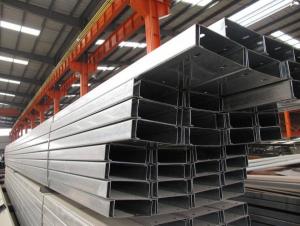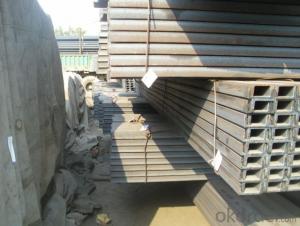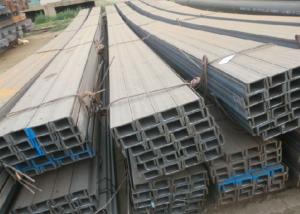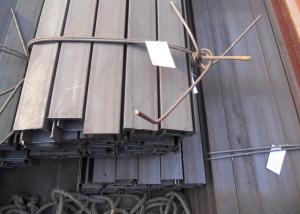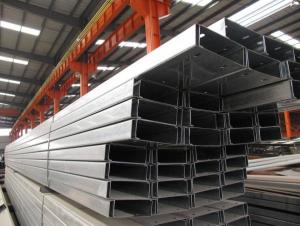H Iron Beam Structural Carbon Steel H Beam Profile (IPE,UPE,HEA,HEB)
- Loading Port:
- Tianjin
- Payment Terms:
- TT or LC
- Min Order Qty:
- 29 m.t.
- Supply Capability:
- 24000 m.t./month
OKorder Service Pledge
OKorder Financial Service
You Might Also Like
Product Description:
OKorder is offering H Iron Beam Structural Carbon Steel H Beam Profile (IPE,UPE,HEA,HEB) at great prices with worldwide shipping. Our supplier is a world-class manufacturer of steel, with our products utilized the world over. OKorder annually supplies products to European, North American and Asian markets. We provide quotations within 24 hours of receiving an inquiry and guarantee competitive prices.
Product Applications:
H Iron Beam Structural Carbon Steel H Beam Profile (IPE,UPE,HEA,HEB) are ideal for structural applications and are widely used in the construction of buildings and bridges, and the manufacturing, petrochemical, and transportation industries.
Product Advantages:
OKorder's H Iron Beam Structural Carbon Steel H Beam Profile (IPE,UPE,HEA,HEB) are durable, strong, and resist corrosion.
Main Product Features:
· Premium quality
· Prompt delivery & seaworthy packing (30 days after receiving deposit)
· Corrosion resistance
· Can be recycled and reused
· Mill test certification
· Professional Service
· Competitive pricing
Product Specifications:
1. Standard: GB, JIS, ASTM ST
2. Material: Q235, Q345, SS400, S235JR, S275JR, S355JR
3. Length: 5.8-12m or according to our clients' requirements
4. Origin: Tangshan, China
5. Package: load on 20 feet/40 feet container or by bulk according to the quantity and our client's requirement
6. Delivery time: within 20 days after receiving deposit or original L/C
7. Certificate: ISO, SGS, BV, CIQ or other test
8. Technic: Hot rolled
9: Surface: painted, galvanized or punch holes
10. Main market: East-south Asia, Mid-east, South American
11. Usage: Construction structure and Frame use
12. Other Main products: Angle steel, I beam and Channel steel
H Type Steel Size and Theoretical Weight | |||||
Size (mm) | Theoretical Weight (kg/m) | Size (mm) | Theoretical Weight (kg/m) | Size (mm) | Theoretical Weight (kg/m) |
100*50*5*7 | 9.3 | 250*125*6*9 | 29 | 446*199*8*12 | 65.1 |
100*100*6*8 | 16.9 | 250*250*9*14 | 71.8 | 450*200*9*14 | 74.9 |
125*60*6*8 | 13.1 | 294*200*8*12 | 55.8 | 482*300*11*15 | 110.8 |
125*125*6.5*9 | 23.6 | 298*149*5.5*8 | 32 | 488*300*11*18 | 124.9 |
148*100*6*9 | 31.1 | 340*250*9*14 | 36.7 | 496*199*9*14 | 77.9 |
150*75*5*7 | 14 | 300*150*6.5*9 | 93 | 500*200*10*16 | 88.1 |
150*150*7*10 | 20.7 | 300*300*10*15 | 78.1 | 582*300*12*17 | 132.8 |
175*90*5*8 | 18 | 346*174*6*9 | 41.2 | 588*300*12*20 | 147 |
175*175*7.5*11 | 40.4 | 350*175*7*11 | 49.4 | 596*199*10*15 | 92.4 |
194*150*6*9 | 29.9 | 350*350*12*19 | 134.9 | 600*200*11*17 | 103.4 |
198*99*4.5*7 | 17.8 | 390*300*10*16 | 104.6 | 700*300*13*24 | 181.8 |
200*100*5.5*8 | 20.9 | 396*199*7*11 | 56.1 | 800*300*14*26 | 206.8 |
200*200*8*12 | 49.9 | 400*200*8*13 | 65.4 | 900*300*16*28 | 240.1 |
244*175*7*11 | 43.6 | 400*400*13*21 | 171.7 | ||
248*124*5*8 | 25.1 | 440*300*11*18 | 120.8 | ||
Length=6-12meters | |||||
FAQ:
Q1: Why buy Materials & Equipment from OKorder.com?
A1: All products offered byOKorder.com are carefully selected from China's most reliable manufacturing enterprises. Through its ISO certifications, OKorder.com adheres to the highest standards and a commitment to supply chain safety and customer satisfaction.
Q2: How do we guarantee the quality of our products?
A2: We have established an advanced quality management system which conducts strict quality tests at every step, from raw materials to the final product. At the same time, we provide extensive follow-up service assurances as required.
Q3: How soon can we receive the product after purchase?
A3: Within three days of placing an order, we will begin production. The specific shipping date is dependent upon international and government factors, but is typically 7 to 10 workdays.
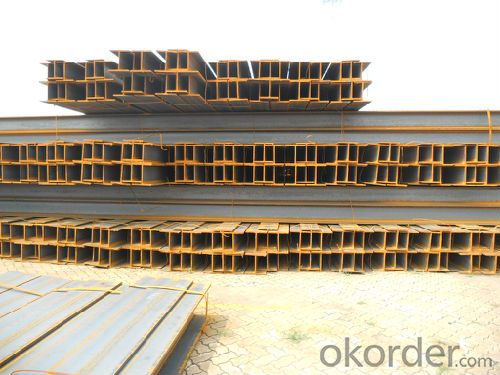
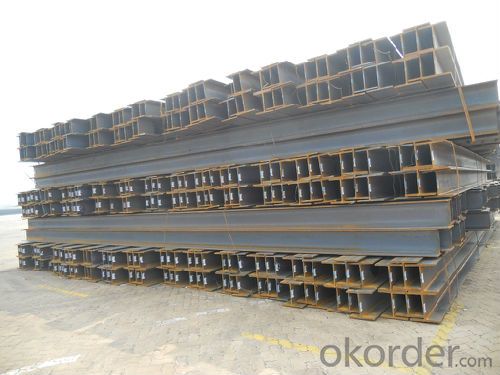
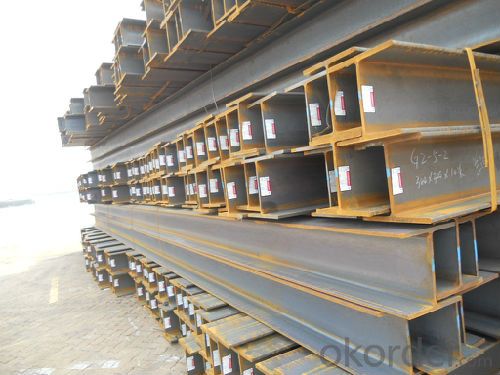
- Q: Can steel channels be used for marine applications?
- Steel channels are indeed suitable for marine applications. They serve as versatile structural components widely utilized in shipbuilding and other marine-related industries. With their exceptional strength and durability, they prove to be ideal for various marine uses, including ship hulls, decks, bulkheads, and frames. By applying suitable coatings and treatments, the corrosion resistance of steel channels can be enhanced, allowing them to withstand the harsh marine environments. Moreover, steel channels can be effortlessly fabricated and welded to meet specific design specifications, making them the preferred option in marine construction.
- Q: Can steel channels be used for curtain wall systems?
- Curtain wall systems can utilize steel channels, which serve as the framing system and provide structural support for the attachment of glass panels or cladding materials. These systems are typically made of lightweight materials like aluminum or steel, creating a non-structural exterior wall system that protects against weather conditions. Steel channels offer numerous advantages, including their high strength-to-weight ratio, durability, and ability to be prefabricated off-site for efficient installation. Nonetheless, it is crucial to consider the specific design requirements and load calculations to ensure the steel channels meet the necessary structural and performance criteria for curtain wall systems.
- Q: Can steel channels support electrical wiring?
- Yes, steel channels can support electrical wiring. Steel channels are commonly used in construction and electrical applications to provide structural support and protection for electrical wiring. They are often installed along walls, ceilings, or floors to conceal and protect electrical cables. Steel channels are durable and can withstand the weight of electrical wiring, ensuring that the wiring remains secure and protected. Additionally, steel channels can be easily installed and provide a clean and organized solution for routing electrical wiring.
- Q: Are steel channels suitable for use in the construction of machinery frames?
- Yes, steel channels are suitable for use in the construction of machinery frames. Steel channels provide excellent structural support and stability, making them ideal for handling heavy loads and withstanding vibrations and impacts often encountered in machinery operations. Additionally, steel channels offer versatility in design and can be easily modified or welded to specific requirements, making them a reliable choice for machinery frames.
- Q: How do steel channels contribute to the energy efficiency of a building?
- Steel channels contribute to the energy efficiency of a building by providing structural support and insulation. The channels can be used to create a framework that supports the walls, floors, and roofs of a building, allowing for efficient distribution of weight and load-bearing capacity. Additionally, steel channels can be filled with insulating materials, such as foam or fiberglass, which help to reduce heat transfer and improve the thermal performance of the building. This insulation minimizes heat loss during winter and heat gain during summer, thus reducing the energy required for heating and cooling the building.
- Q: Can steel channels be used for sign supports?
- Indeed, sign supports can utilize steel channels. Given their robustness and endurance, steel channels frequently find application in construction and engineering ventures. They prove particularly advantageous in scenarios necessitating substantial weight-bearing capabilities, thereby rendering them well-suited for supporting signs. Furthermore, steel channels boast effortless fabrication and customization, enabling adaptation to meet precise specifications. Additionally, their exceptional resistance to weathering and corrosion guarantees prolonged sustainability for sign supports. Notably, steel channels furnish stability and rigidity, guaranteeing signs remain securely fixed, even amidst unfavorable environmental conditions.
- Q: Are steel channels suitable for use in marine environments?
- Marine environments can benefit from the use of steel channels because steel is renowned for its strength and durability, making it an excellent material for marine applications. Steel channels are extensively used in ship construction, offshore structures, and other marine equipment. One of the prime reasons why steel channels are suitable for marine environments is their ability to resist corrosion. To prevent rusting and corrosion caused by exposure to saltwater, steel can be coated with protective layers like galvanization or epoxy paint. These coatings form a barrier between the steel and the corrosive elements in marine environments, effectively extending the lifespan of steel channels. Furthermore, steel channels offer exceptional structural integrity and load-bearing capacity, enabling them to withstand the harsh conditions of the sea, including waves, currents, and extreme weather events. Their ability to support heavy loads makes them suitable for a wide range of marine applications, such as shipbuilding, dock construction, and offshore platforms. Moreover, steel channels possess excellent fire resistance properties, a crucial aspect for safety in marine environments. In the event of a fire on a ship or offshore structure, steel channels can help contain the spread of flames and maintain the structural integrity of the vessel or platform. Nevertheless, it is crucial to note that regular maintenance and inspection are necessary to ensure the ongoing suitability of steel channels in marine environments. To maintain the structural integrity and safety of steel channels in marine applications, periodic inspections for signs of corrosion or damage and prompt repairs or replacements are essential. In conclusion, steel channels are undeniably suitable for marine environments due to their high strength, corrosion resistance, load-bearing capacity, and fire resistance properties. With proper maintenance and inspection, steel channels can provide long-lasting performance in marine applications.
- Q: Do steel channels require any special maintenance?
- Steel channels do not require any special maintenance. However, regular maintenance is necessary to ensure their longevity and performance. This maintenance typically includes cleaning and inspecting the channels for any signs of damage or corrosion. If any issues are identified, they should be promptly addressed to prevent further deterioration. Additionally, lubricating the channels regularly can help reduce friction and wear, ensuring smooth operation. By following these maintenance practices, steel channels can remain in optimal condition and provide reliable support and structural integrity.
- Q: What are the design considerations for using steel channels in construction?
- There are several important factors that need to be considered when using steel channels in construction. These factors include structural integrity, load-bearing capacity, corrosion resistance, fire resistance, and overall cost-effectiveness. To begin with, steel channels are commonly used in construction because they have excellent structural integrity. They have a high strength-to-weight ratio, which allows for efficient use of materials in building structures. When designing with steel channels, it is important to consider the specific load requirements and stresses that they will be subjected to. This ensures that the channels are appropriately sized and spaced to support the intended loads. Another important consideration is the load-bearing capacity of the steel channels. The design should be based on the expected loads that the channels will bear, whether from live loads or dead loads. Calculations and analysis should be conducted to determine the required size and spacing of the channels, ensuring that they can safely support the intended loads without failure or deformation. Corrosion resistance is also crucial for steel channels, especially in construction projects where they may be exposed to moisture or harsh environmental conditions. It is important to apply proper protective coatings or treatments to prevent rust and corrosion, ensuring the longevity and durability of the channels. Additionally, the design should incorporate drainage and ventilation to minimize the accumulation of moisture that could lead to corrosion. Fire resistance is another important factor to consider. Steel channels can be vulnerable to high temperatures, which can weaken their structural integrity. The design should include the use of fire-resistant materials, such as fire-rated coatings or intumescent paints, to enhance the fire resistance of the channels and prolong their load-bearing capacity under fire conditions. Lastly, cost-effectiveness plays a significant role in the design considerations for using steel channels in construction. The design should aim to optimize the use of steel channels, avoiding over-engineering while still meeting the required safety and performance standards. The selection of steel grades and coatings should be balanced to provide the necessary level of performance at the most cost-effective price point. In conclusion, when using steel channels in construction, it is important to consider factors such as structural integrity, load-bearing capacity, corrosion resistance, fire resistance, and cost-effectiveness. By taking these factors into account, the steel channels can perform effectively and efficiently in the construction project, contributing to the overall success and longevity of the structure.
- Q: The back of the channel steel deviates from the 30mm. The upper and lower iron plates are welded at intervals. Is the cross section resistance moment the sum of the two? No, is it big or small? Thank you
- Elder brother?! The general channel without you so used, if used together with 2 channels, to groove is used, it can not be like you said with the back to back, with the flexural performance of steel greatly reduced so that you see the cement rod, hollow slab, steel pipe was use, so as to get more with less weight material bearing.
Send your message to us
H Iron Beam Structural Carbon Steel H Beam Profile (IPE,UPE,HEA,HEB)
- Loading Port:
- Tianjin
- Payment Terms:
- TT or LC
- Min Order Qty:
- 29 m.t.
- Supply Capability:
- 24000 m.t./month
OKorder Service Pledge
OKorder Financial Service
Similar products
Hot products
Hot Searches
Related keywords



